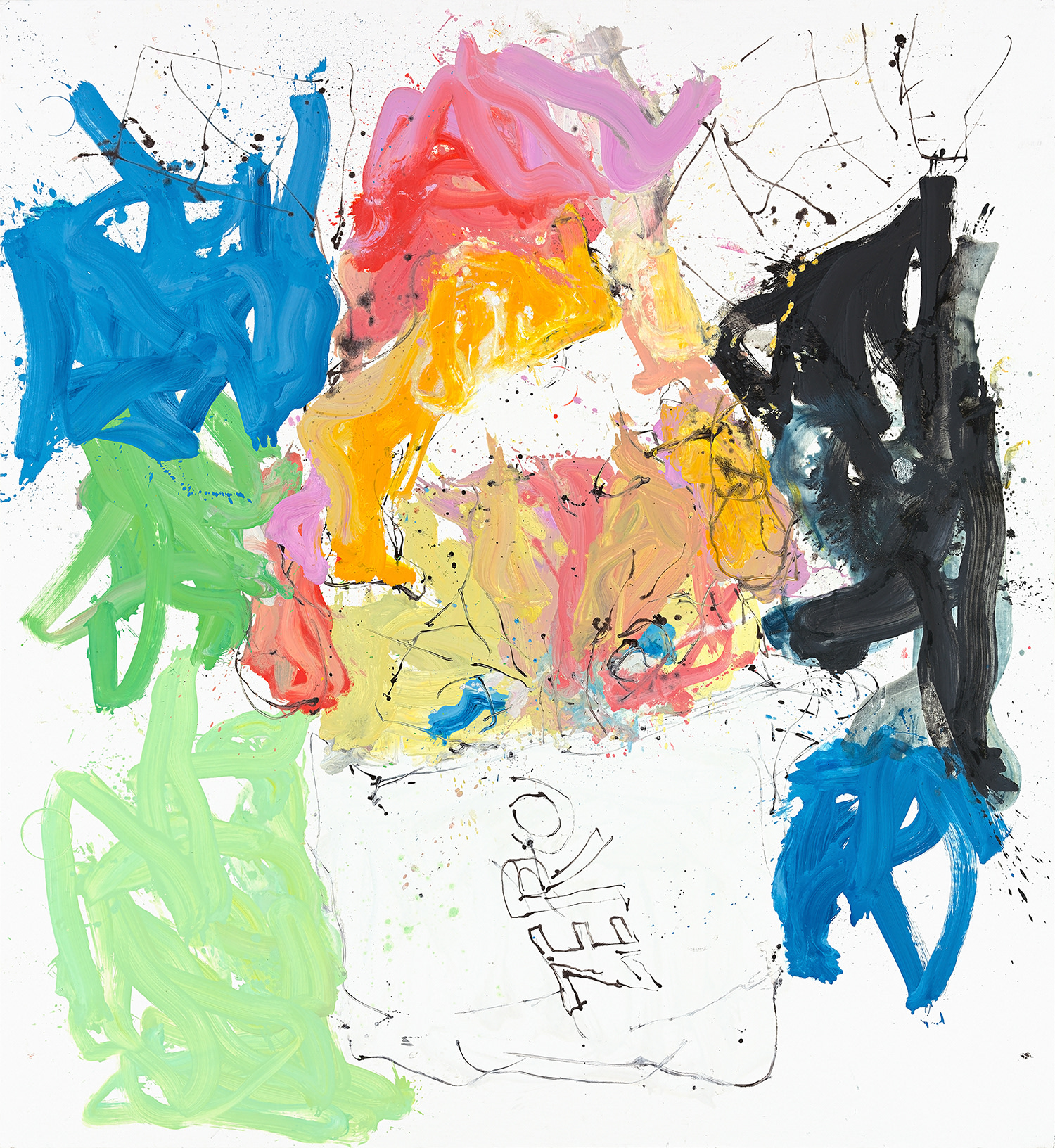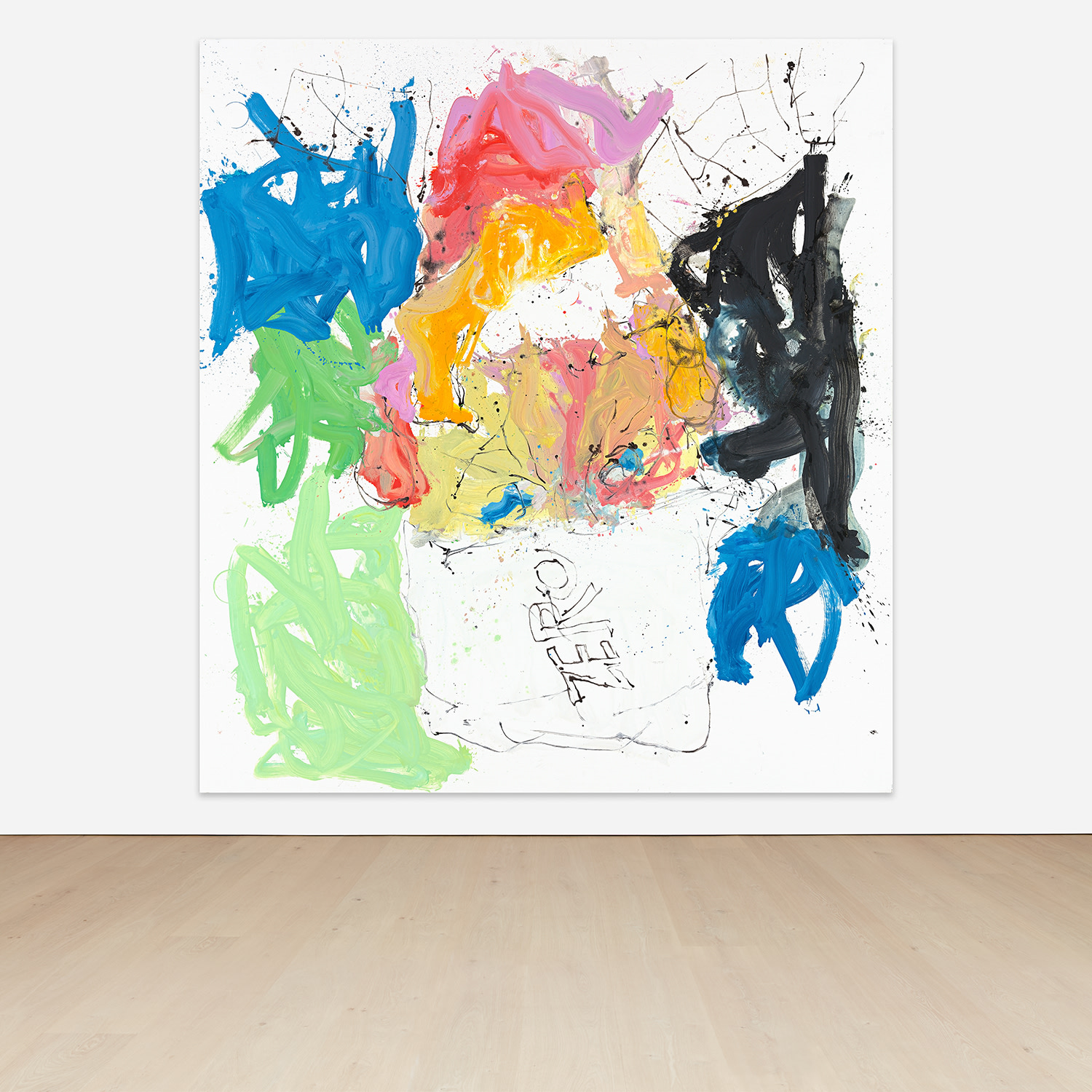



19Ο◆
Georg Baselitz
Wel lam ruch nichtet mihr (Frebl aill lew)
signed, partially titled and dated 'G. Baselitz I.VI.2013 wel lam ruch nichtet mihr' on the reverse
oil on canvas
300 x 275 cm (118 1/8 x 108 1/4 in.)
Painted on 1 June 2013.